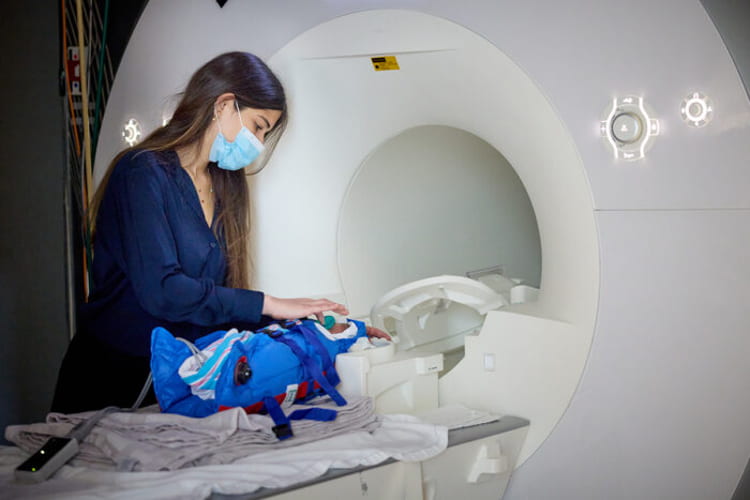Poverty and crime can have devastating effects on a child’s health. But a new study from researchers at Washington University School of Medicine in St. Louis suggests that some environmental factors influence the structure and function of young brains even before babies make their entrances into the world.
A study published online April 12 in the journal JAMA Network Open found that MRI scans performed on healthy newborns while they slept indicated that babies of mothers facing social disadvantages such as poverty tended to be born with smaller brains than babies whose mothers had higher household incomes.
MRI scans of full-term newborns born to mothers living in poverty revealed smaller volumes across the entire brain — including the cortical gray matter, subcortical gray matter and white matter — than found in the brains of babies whose mothers had higher household incomes. The brain scans, which were conducted only a few days to weeks after birth, also showed evidence of less folding of the brain among infants born to mothers living in poverty. Fewer and shallower folds typically signify brain immaturity. The healthy human brain folds as it grows and develops, providing the cerebral cortex with a larger functional surface area.
A second study of data from the same sample of 399 mothers and their babies — this one published online April 12 in the journal Biological Psychiatry — reports that pregnant mothers from neighborhoods with high crime rates gave birth to infants whose brains functioned differently during their first weeks of life than babies born to mothers living in safer neighborhoods. Functional MRI scans of babies whose mothers were exposed to crime displayed weaker connections between brain structures that process emotions and structures that help regulate and control those emotions. Maternal stress is believed to be one of the reasons for the weaker connections in the babies’ brains.
“These studies demonstrate that a mother’s experiences during pregnancy can have a major impact on her infant’s brain development,” said Christopher D. Smyser, MD, one of the principal investigators. “Like that old song about how the ‘knee bone is connected to the shin bone,’ there’s a saying about the brain, that ‘areas that fire together wire together.’ We’re analyzing how brain regions develop and form early functional networks because how those structures develop and work together may have a major impact on long-term development and behavior.”
